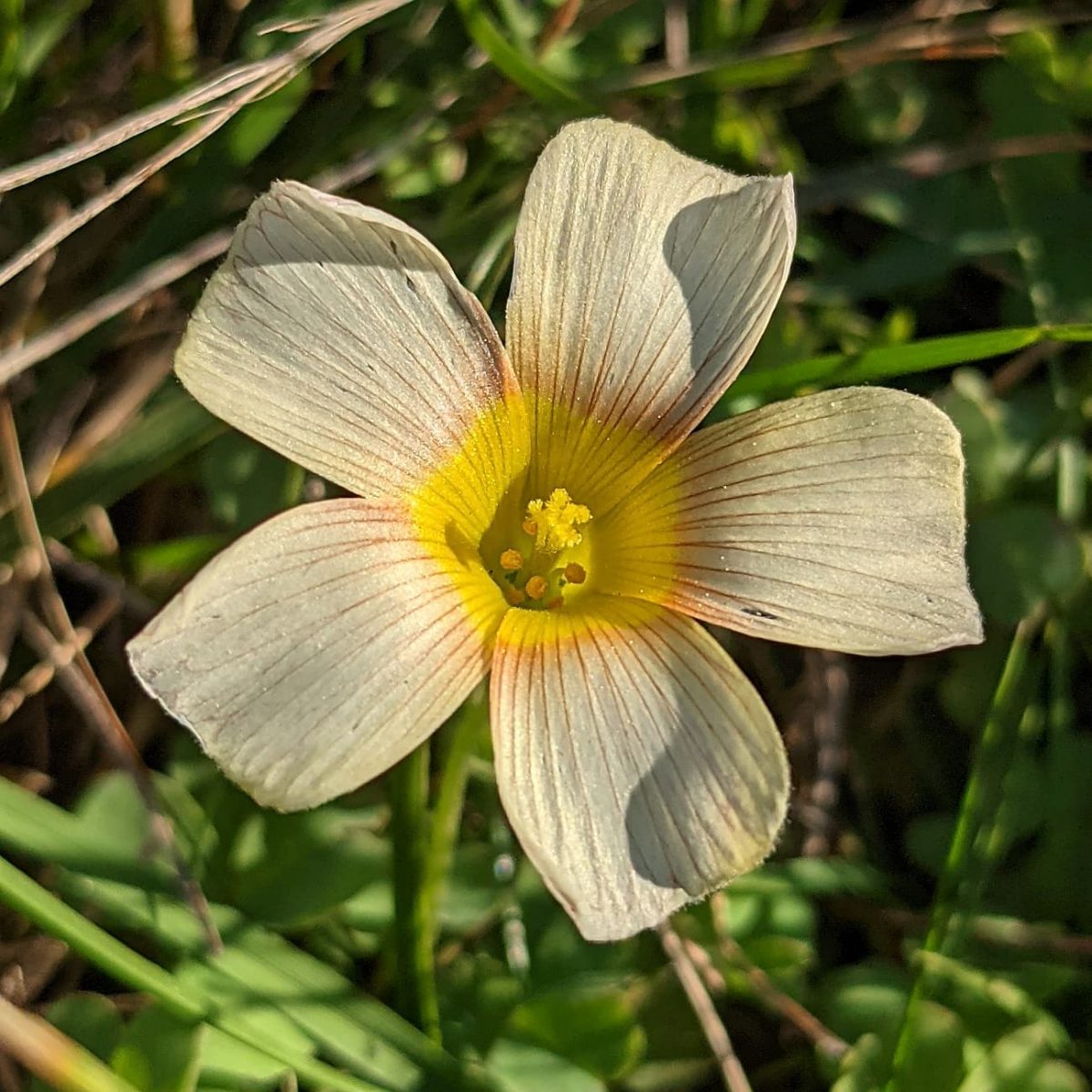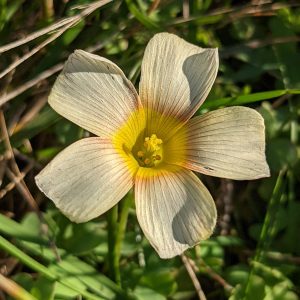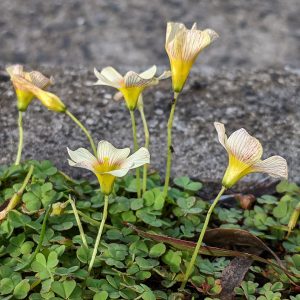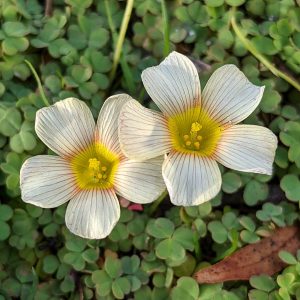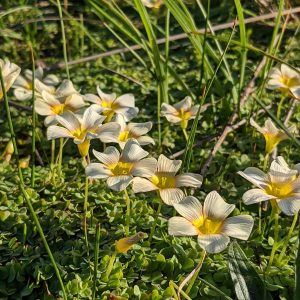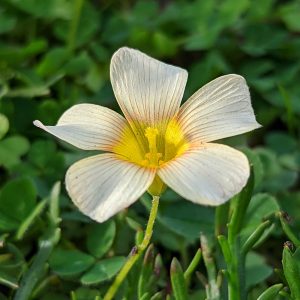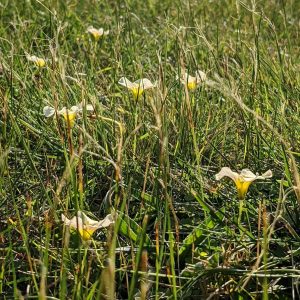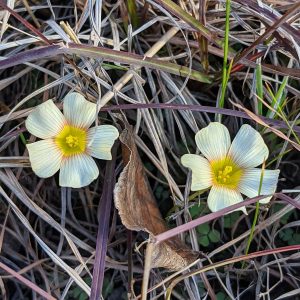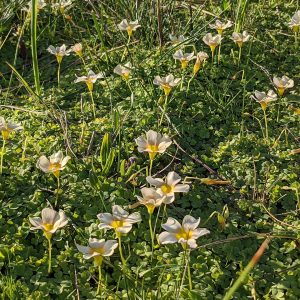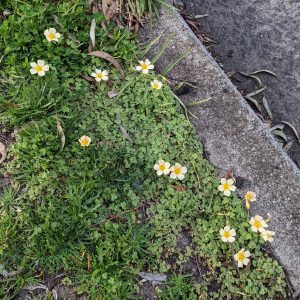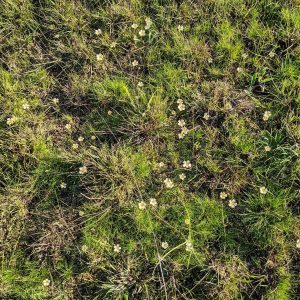Yellow-eye Wood Sorrel (Oxalis obtusa), another of Melbourne’s strikingly coloured infestations from South Africa’s Western Cape province and Namaqualand.
A relative of the ubiquitous Soursob (O. pes-caprae), Yellow-eye Wood Sorrel is favoured by collectors around the world for its wide variety of colour forms. Unusually (but not *that* unusually), the species has recently established naturalised populations in Victoria and nowhere else.
First recorded in 1949 on sloping lawns above the Yarra River at Anderson Street, just outside the RBG (could someone tell us if it is still there?), since that time the plants have also turned up in nature strips and natural areas at Reservoir, Craigieburn and Fawkner, and outside the metropolitan at Buckley’s Falls, Geelong and at Baynton, NE of Kynton. Modest and nearly invisible unless you look for them, flowering for just a few weeks in late August and early September, the species is almost assuredly under-recorded on Melbourne’s suburban fringe.
To paint the picture, the City of Darebin’s Integrated Weeds Strategy (2019) lists Oxalis obtusa with a single record (from the Central Creek Grassland in 1999). The plant remains prominent in that reserve, a rare pocket of Themeda triandra grassland just south of the M80, where the weed keenly survives cyclical management burns and is effectively now part of the furniture. But it is also established on kilometres of nature strips in surrounding Reservoir subdivisions, a population not reflected in any digital record.
As with the ubiquitous Soursob, Oxalis obtusa has a strong incompatibility system that prevents seed set where outcrosses are unavailable. The tens of thousands of specimens of Oxalis obtusa at Reservoir are almost certainly all clones, spread exclusively as tiny bulbils stuck to shoes or tyres.
Tolerant of mowing, fire and likely chemical management, this is a plant that will almost undoubtedly continue to find its way into broader areas of the metropolitan fringe. Out there already and flowering right now, perhaps it is inside your 5 km?
View Original Post on Instagram
Search for information about Oxalis obtusa in the Flora of Victoria
View information and occurrences of Oxalis obtusa on the Atlas of Living Australia
